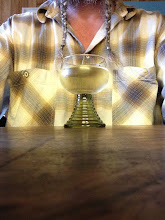I'm often asked this question, so I'll answer it as directly as I can. No.
Mies did not believe that architecture had anything to do with politics at all. But his was a very high church form of ambivalence, it's not the ambivalence of Philip Johnson, or Albert Speer for instance. He would have worked for the Nazi's if they'd commissioned him, but he had very lean years before his departure for the USA in 1936. He famously told Alfred Rosenberg, the thoroughly nasty Nazi ideologue, the big brutish Balt, that he should throw his desk out of the window because of it's awful design. That was his problem with the Nazis, no taste in desks, no taste in anything. Technically the designer of the desk is hardly responsible for what's written on it I suppose. When he had the chance the build a villa and the local Nazi planning committee said fine as long as he hid it behind a mound, he told them to stuff it and walked away.
Meanwhile when he got to America his Farnsworth House, once in court, was labelled 'unamerican' (communist) in the American press, so it seems he couldn't win, while at the same time it seems to prove his point. Meanwhile his office buildings were just perfectly suited, in their elegance and anonymity, to capitalist corporations.
In a final twist he was invited back to Berlin to build the New National Gallery as part of the Kulturforum, an intriguing attempt to de-Nazify a culture that was still riddled with Nazi's. So eventually, by death, he was deemed an anti-Nazi.
Saturday, 16 February 2013
Subscribe to:
Post Comments (Atom)


No comments:
Post a Comment